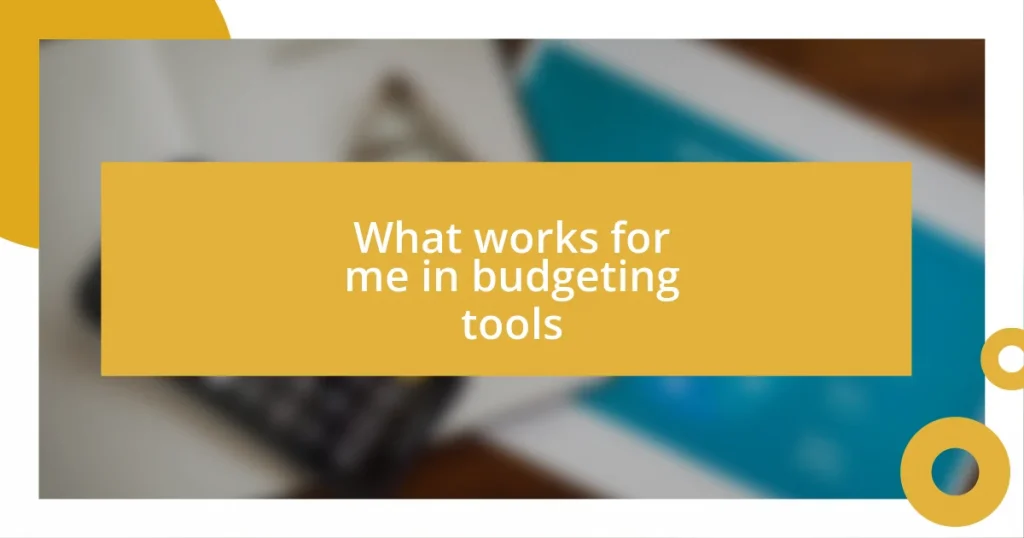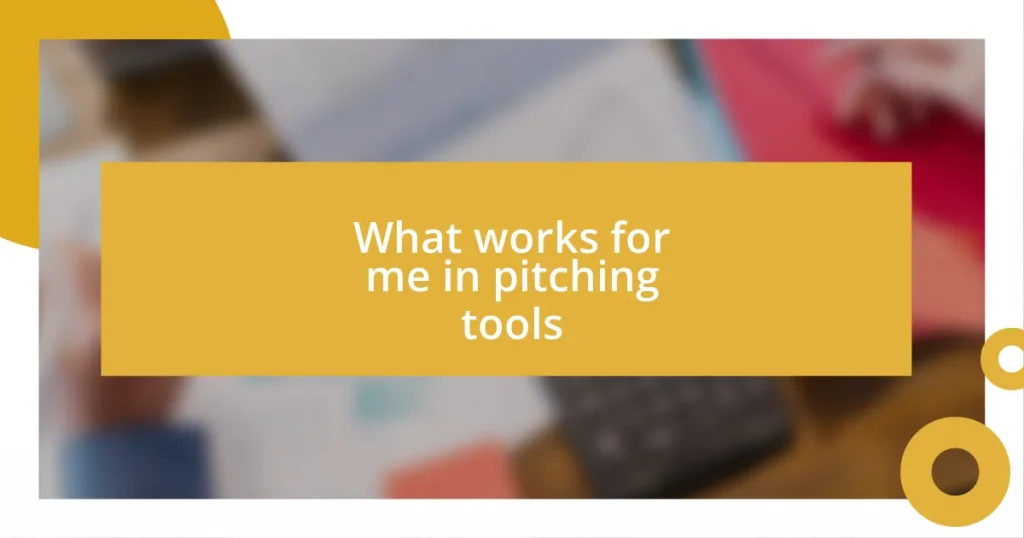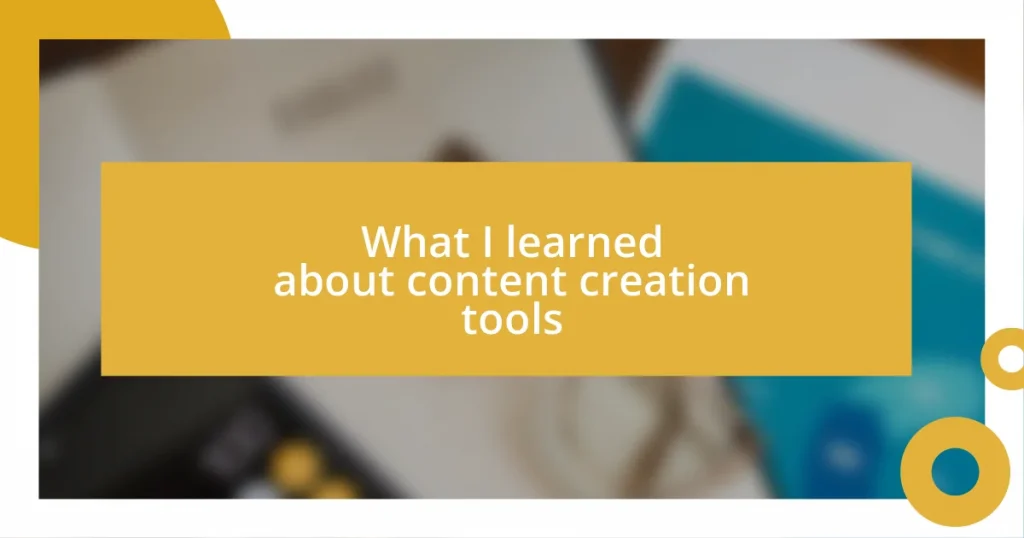Key takeaways:
- Networking and community engagement can uncover unexpected funding sources and enhance opportunities beyond online searches.
- Thoroughly understanding funding criteria and tailoring proposals to align with funders’ goals is essential for successful applications.
- Documenting the funding evaluation process, including reflections and feedback, aids in learning from past experiences and improving future proposals.

Identifying funding sources
Identifying funding sources can often feel like searching for a needle in a haystack. I remember my first attempt at this – sitting at my desk with a cup of coffee, scouring the internet for hours. It was overwhelming! But I realized that narrowing my search to specific grant databases and local organizations helped streamline the process and uncover valuable opportunities.
I’ve often found that networking within my community can lead to unexpected funding sources. For instance, attending a local workshop on entrepreneurship not only introduced me to potential collaborators but also opened doors to grants I had never considered. Have you ever wondered where your colleagues find their funding? Turns out, conversations can yield leads you might have missed just by relying on online searches.
Diving into industry-specific associations often reveals gems in funding sources. When I focused on areas related to my project, I stumbled upon a small foundation that funded initiatives like mine. This reinforces a thought I keep returning to: sometimes, the best opportunities lie just outside your immediate horizon, waiting to be discovered with a bit of initiative and exploration.

Understanding funding criteria
Understanding funding criteria is like reading the fine print before signing a contract. I’ve often come across funding opportunities that seemed promising at first glance, only to realize later that I didn’t meet specific requirements. It’s crucial to dive deep into the criteria and ensure your project aligns with the funder’s goals. Cutting corners in this area can lead to wasted time and effort chasing after funds that aren’t a right fit.
When I evaluate funding criteria, I always keep these key points in mind:
- Eligibility: Check if your organization or project meets the funder’s qualifications.
- Focus Areas: Understand what specific topics the funder is interested in; alignment is key.
- Funding Limits: Know the maximum or minimum amounts available and whether it suits your budget.
- Timeline: Review submission deadlines and funding cycles to plan your application process effectively.
- Reporting Requirements: Be aware of what documentation and accountability the funder will expect after receiving funds.
These aspects guide my decision-making process, ensuring I focus my energies on the most relevant opportunities. I’ve felt the relief of passing on a grant that wouldn’t suit my project and instead channeling that effort into crafting a compelling proposal for a fund that truly resonates with my vision.

Assessing funding application processes
Assessing funding application processes is essential for streamlining your efforts. I’ve learned that each funder often has a unique application format. When I applied for a state grant last year, I initially felt overwhelmed by the extensive paperwork and specific formatting requirements. I quickly discovered that breaking down the application into manageable sections made the process less daunting. Have you ever felt like you were losing track of your thoughts while applying? It’s easy to feel that way, but creating a checklist helped me stay organized and focused.
The timeline for funding applications also varies significantly. I remember when I rushed through a local grant application because of an impending deadline, only to realize I had missed crucial information. Now, I always set clear milestones, allowing ample time for revisions. This ensures I put my best foot forward, presenting my ideas as clearly and compellingly as possible. It’s amazing how a little planning can alleviate stress and improve the quality of your submission.
Finally, understanding the review process can give you an edge. Some organizations may even provide insights on what factors influence their decisions. I once reached out to a funder’s contact for clarity before submitting an application, which led to some invaluable feedback. This experience taught me that engaging directly with funders can demystify their processes and equip you with information that could make all the difference.
| Criteria | Understanding |
|---|---|
| Application Format | Varies by funder; requires tailored approach |
| Timeline | Submission deadlines differ; planning is crucial |
| Review Process | May be hierarchical or panel-based; can seek clarity directly |

Analyzing funding proposal requirements
When analyzing funding proposal requirements, I’ve found that paying close attention to the details is paramount. For instance, during one grant application, I missed a minor requirement regarding project sustainability, which ultimately cost me the funding. It made me wonder—how can something seemingly small hold so much weight? I now approach such tasks with a meticulous mindset, ensuring I check every box to align with what the funder seeks.
Another critical aspect involves understanding the language used in the proposal guidelines. I recall a time when I struggled with the jargon in an international grant. The terms used felt daunting, almost as if they were designed to intimidate me. However, instead of backing down, I took the time to research and clarify phrases that weren’t familiar. This not only helped me submit a stronger application but also boosted my confidence in navigating more complex funding opportunities.
Lastly, I’ve realized the importance of tailoring each proposal to resonate with the specific goals of the funding organization. I remember crafting a proposal for a community project that incorporated the funder’s stated priorities. It was deeply rewarding to receive positive feedback from them, highlighting how well I had aligned my project with their mission. Have you ever felt the joy of knowing you’ve truly connected with a grantor? That experience solidified my belief that funding proposals aren’t just paperwork—they’re a chance to establish a meaningful relationship with potential supporters.

Comparing funding opportunities
When I set out to compare funding opportunities, the first thing I do is create a side-by-side chart. This allows me to visualize key criteria like eligibility, funding amounts, and project alignment. I once spent a weekend sitting at my kitchen table, coffee in hand, painstakingly filling this chart out for three different grants. It was eye-opening to see how some funds were a perfect match while others missed the mark completely. Have you ever noticed how a clear comparison can make things feel less overwhelming?
In my experience, another crucial factor is the funder’s reputation and history. I check past recipients to gauge their alignment with my goals. There was one instance where I learned that a seemingly perfect grant had strict reporting requirements that could have derailed my project. Trust me, diving into these details is worth it. Engaging with past grantees can provide insights that go beyond the FAQs and tell you what it’s really like working with a particular funder.
Finally, I can’t stress enough the value of networking in this process. Reaching out to others who have navigated similar funding landscapes has opened doors for me. I remember attending a workshop where a fellow participant shared their success story with a fund I hadn’t initially considered. That conversation led me to an opportunity that ultimately funded my project! How often do we overlook the power of community connections while evaluating options? Building relationships can transform your funding journey in ways you might not expect.

Evaluating funding outcomes
Evaluating the outcomes of funding proposals goes beyond just assessing whether we secured the funds. I remember a project where I was thrilled to receive the grant, only to realize later that the expectations set were a bit unrealistic for the small team I had. It made me think—what’s the point of securing funding if it leads to overwhelming pressure? Reflecting on these outcomes can provide invaluable lessons for future applications, ensuring we don’t just chase the money but thoughtfully consider its implications on our projects and team.
On a more practical note, tracking the success metrics outlined in the proposal is essential for evaluation. During one project, I diligently measured our progress against the stated goals and, surprisingly, discovered areas where we soared beyond expectations. That realization filled me with pride and reinforced the notion that proper evaluation isn’t merely about meeting the funder’s requirements; it’s about celebrating milestones and learning from the journey. Have you ever paused to quantify your own achievements? It can be incredibly motivating.
Lastly, I find that sharing the outcomes with stakeholders fosters a supportive community and opens doors for future collaborations. After completing a funded initiative, I organized a small gathering to present our results. It was a rewarding experience to see funders and participants engage, discussing what worked and what could be improved. This not only enhanced our relationships but also positioned us as conscientious grantees committed to growth. In your own experiences, how often do you take the time to share and reflect on outcomes with those invested in your success? It creates a powerful dialogue that can shape the future of your projects.

Documenting your funding evaluation
Documenting my funding evaluation process is a bit like keeping a journal of my thoughts and decisions, allowing me to track not just the numbers but the reasons behind them. During one memorable project, I created a dedicated document where I summarized each funding opportunity, noting down my reflections on eligibility, alignment, and potential pitfalls. Looking back at that document later, I realized it saved me from repeating mistakes and helped clarify my priorities for future projects. Have you ever thought about how documentation can serve as a roadmap through your funding journey?
Another aspect I value is the importance of capturing feedback throughout the evaluation process. I often jot down my initial impressions and thoughts after reviewing each opportunity. For instance, while assessing a funding option that initially seemed ideal, I recorded my hesitations about its reporting demands and long-term expectations. This practice not only helps in maintaining clarity but also encourages candid self-reflection that can inform adjustments down the road. How often do we pause to document our gut feelings, and how might that insight lead to better decisions?
Lastly, I’ve found that creating a visual representation of my funding evaluation helps to synthesize my thoughts. For instance, I once turned my notes into a mind map that illustrated connections between various opportunities and my objectives. This not only clarified my direction but reignited my passion for the project. Isn’t it amazing how a simple visual tool can encapsulate complex thoughts and spark enthusiasm? Documenting the evaluation process, therefore, becomes not just about recording information, but about fostering a connection with our work and igniting that spark of creativity.















